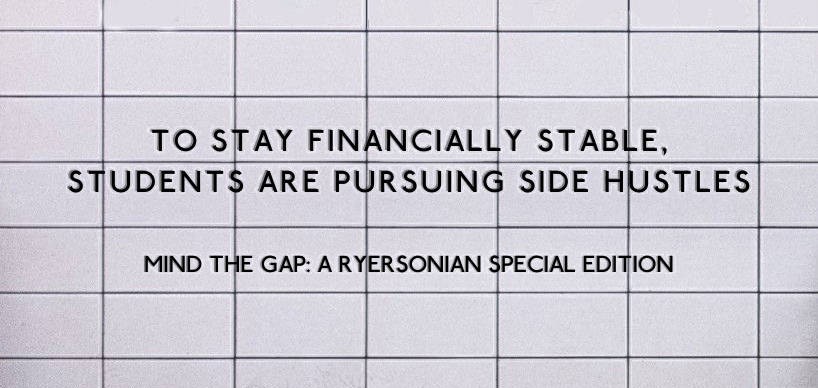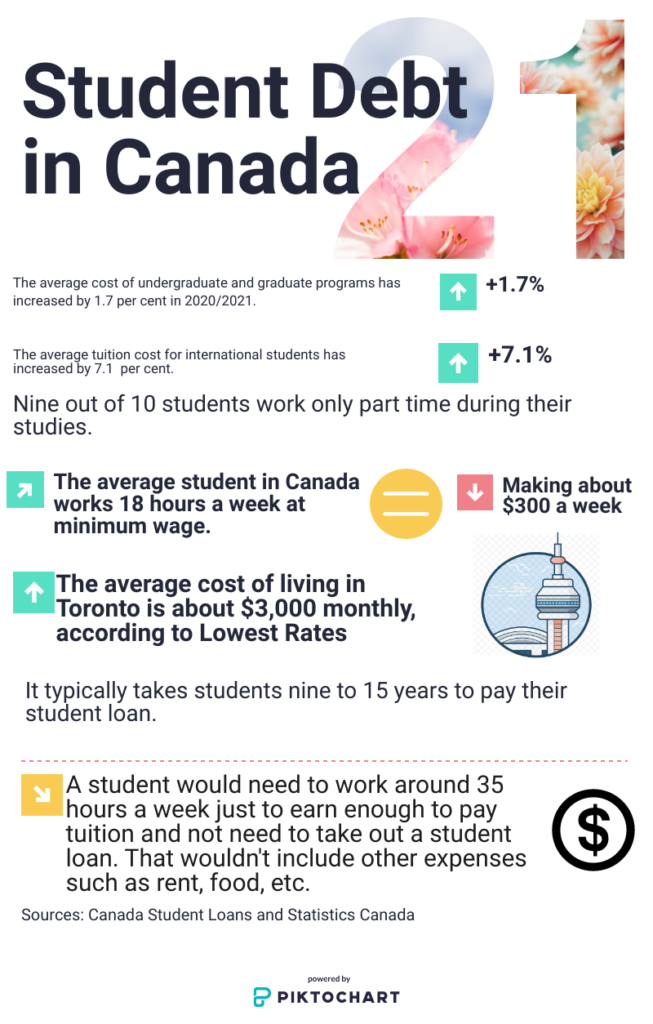The pandemic has forced many students to take on extra gigs to make money

Even though school in itself can feel like a full-time job, more students are taking on side hustles to stay financially stable.
A side hustle is a form of employment that is undertaken alongside a full-time or part-time job. Though side hustles are often confused with a part-time job, they are not the same.
“A side hustle gives you the freedom to decide how much you want to work and earn,” according to Wonolo, a company that helps people find quality work.
Side hustles have become trendier as living has become more expensive. Communities on platforms such as Reddit, Facebook, Instagram and TikTok open doors for those students looking for a source of extra income. Side hustles can range from selling textbooks, art or clothing to becoming a voice actor or speed typer — anything goes.
Hannah Goodman, a fourth-year psychology student at the University of Guelph, is one of the many students taking on a side hustle. On top of her part-time retail job, she wears several other hats including English tutoring, Zoom tutoring for older adults, going through journal articles and indexing for a research physician, and acting as an online concierge for web events.
Goodman began this journey over a year ago to fund her way through graduate school and to become financially stable after graduation.
“Side hustling allows me to make almost (the same amount of) money that a full-time worker would make in a week,” said Goodman.
Goodman lives with her parents and is trying to save enough money to move out and pay off her student loans.
“Because I am going to be in school for so long, I want to be financially independent once I am done,” said Goodman.
Since the pandemic hit, the unemployment rate reached 9.4 per cent, the highest rate since August 2020. In January, 213,000 jobs were lost, according to Statistics Canada. The rise of unemployment makes finding a job even harder for students needing to earn enough money to cover their expenses. In 2020, the unemployment rate for youth aged 15 to 24 reached 16.7 per cent, according to Statista.
Around 30 per cent of Canadians participate in the gig economy, which covers flexible, temporary or freelance jobs, according to a report from the Bank of Canada. The average student debt for Canadians is more than $17,000, according to Credit Karma. The majority of full-time students only take on part-time jobs if they have the time, which makes being financially stable difficult.
Even though school in itself can feel like a full time job, more students are taking on side hustles to stay financially stable.

Finding ways to make more money
Sean Wise, an associate professor at Ryerson University, embraced entrepreneurship via side hustles when he was 13 years old after being fired from his first job at McDonald’s.
“When I went home to tell my parents, both of whom were entrepreneurs, they said something I have never forgotten,” Wise said: “‘If you don’t like it, don’t work for other people.’”
After thinking “long and hard about what a 13-year-old kid could do,” he said he “settled on being a clown for children’s birthday parties.”
Most student side hustles come out of necessity, said Wise, who tried out many different side hustles throughout his life. He said the path for students pursuing a full-time career path is riddled with hardships.
“The gig economy, the rise of (artificial intelligence), the pandemic — these have all undermined the availability of lifetime full-time employment. Combine that with rising student debt and living at home, and you have a perfect storm,” said Wise.
“The only solution is to take your future in your hands, to start something.”
– Sean Wise
It has become more common for students to work while in school. A Canadian study found that 56 per cent of university students work around 18 hours a week. While working this much may seem like a lot for a student, it costs approximately $3,500 per month to live in Toronto, according to Lowest Rates. Working 18 hours a week at a minimum wage job, students earn approximately $1,026 a month, not including taxes — not even half of the cost to live in Toronto.
With student debt increasing, the pressure is on and more students are feeling like they need to make as much money as possible while they’re still in school so they face fewer financial burdens once they graduate.
Taking the jump into a new side hustle
What started as a hobby for Nour Al-Saied, a fourth-year journalism student at Ryerson University, turned into a platform to earn money.
Al-Saied founded Nourishing Paintings and has been selling her paintings since last August. She started it as a way to take a break from screen time and find a creative outlet during the pandemic. But after running out of space in her room to store all of the paintings, she began to sell them.
“When I started, I never intended to make a lot of money, I just wanted to sell paintings for fun,” said Al-Saied. “However, they do help cover my expenses like textbooks, food, clothing, transportation, gas and other daily costs.”
Like Al-Saied, students all over the world have taken on side hustles to make extra money. On Etsy, an online e-commerce platform used by thousands to sell homemade items, their third-quarter earnings report found that revenue has doubled since 2019 and the number of active sellers has increased by 42 per cent. Shopify, another similar platform that allows small business owners to sell their products has also seen an increase in their revenue by 71 per cent, according to CNBC.
Al-Saied said that a big factor for students pursuing a side hustle is that students often depend on these jobs to cover their expenses.
“This has kind of forced students out of their comfort zone and encouraged them to think of alternative and innovative ways of making money,” she said.
Goodman agrees that side hustles have grown significantly because of the lack of job security, especially during the pandemic.
“I think it is really unfortunate, especially for students that are living in Toronto that a single job is oftentimes just not enough money,” said Goodman.
This article may have been created with the use of AI tools such as
